Love it or hate it, Brutalist architecture has a place in the 21st century
Since its birth, 'New Brutalism' was meant to be an ethic not just an aesthetic
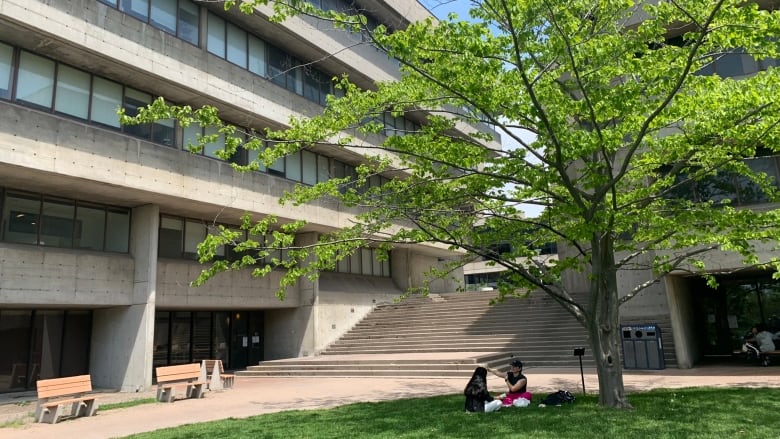

From the start, Brutalism has been a controversial style of architecture. It's been celebrated as monumental, and derided as "concrete monstrosity."
Brutalist architecture originated from the French words for raw concrete, betn brut, in the work of Swiss-French architect Le Corbusier, as well as the Art Brut movement pioneered by Jean Dubuffet.
While it's best known for its extensive use of concrete, with all its textural and sculptural capabilities, fans of Brutalism are also attracted to its space-age, ultramodern sense of shape and purpose.
But there's another layer to Brutalism; a social dimension, articulated during the 1950s in England by architects Peter and Alison Smithson.
They called it the "New Brutalism,"and asserted that it wasn't merely an aesthetic, but an ethic.
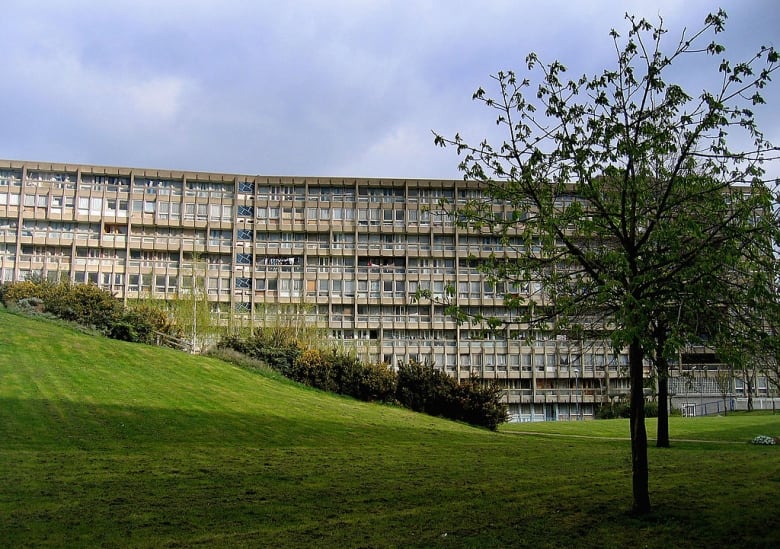
"Brutalist architecture was also a direct and critical engagement with the social world. Brutalism, to quote [the Smithsons] 'tries to face up to a mass production society and drag a rough poetry out of the confused and powerful forces which are at work,'" said Thoburn.
The Smithsons applied these ideas to a council housing estate called Robin Hood Gardens in East London, built in 1972. Despite the Smithsons' innovative approach, the estate was poorly maintained, and eventually became the target of developers.
Not long after Robin Hood Gardens was built, London's financial centre, Canary Wharf, was developed right next door, making for a striking contrast with the public housing estate. The Robin Hood Gardens site thus became a extremely valuable piece of land in London, which was already one of the most expensive cities in the world.
"I'm interested in Robin Hood Gardens as a piece of living architecture, as an estate where working class and minoritized Londoners lived for 50 years, and produced the architecture through their living," said Thoburn.
"It's often claimed that these estates are failures, but these narratives were intended to help demolish the estates for private rebuild."
With Brutalismcomes groundedness
Similar challenges face a beloved museum in a high-density, highly diverse community in Toronto.
On June 21, 2024, the Government of Ontario shut down the Ontario Science Centre, designed by Raymond Moriyama, declaring that it was unsafe, and that parts of the roof were in imminent danger of collapse.

Architects and experts who have examined the report commissioned by Doug Ford's government have challenged that dire analysis. The government plans to relocate the Ontario Science Centre to a redeveloped Ontario Placeon Toronto's waterfront. Itintends to demolish Moriyama's building to make way for housing developments.
Zahireen Tarefdar grew up in Thorncliffe Park and spent a lot of time at the Ontario Science Centre growing up. She calls it an anchor for the community, where there are few places for children to grow and learn safely.
She says the design of the building itself is an integral part of the museum's purpose.
"I feel like I want to sort of reach out and touch the building one last time," said Tarefdar. "It's a building that's always been tactile, and I think that's something that Moriyama talked aboutwanting it to be a very tactile, joyful, curious experience."
Scarborough College 'like a seashell'
As Brutalist buildings continue to face the prospect of demolition, appreciating the ethical and aesthetic values of this style of architecture becomes more important. Given concrete's immense environmental costs, designing buildings like these is no longer feasible.
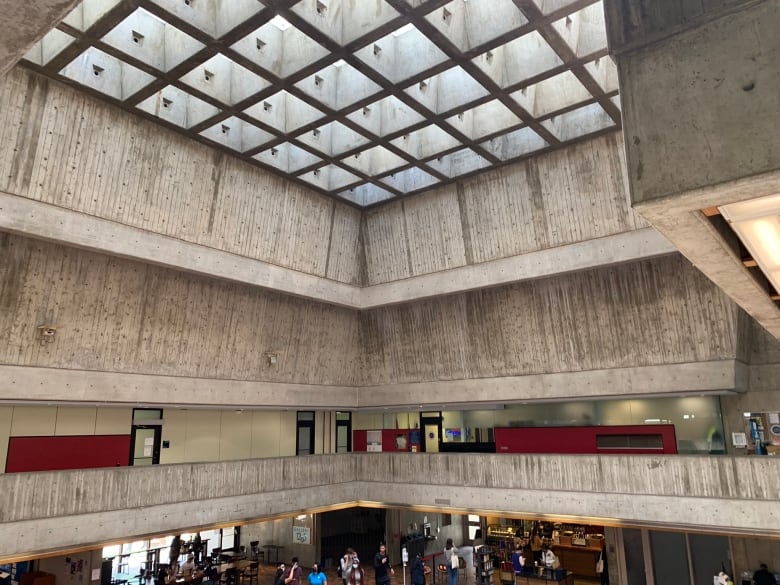
Australian architect John Andrews is perhaps best known in Canada for designing the iconic CN Tower. But at an earlier stage of his career, when he was 29, he was hired to design Scarborough College for the University of Toronto. It opened to students in 1966 and received great acclaim, making the cover of Time Magazine in 1967.
"Scarborough certainly is one of the first, if not the first, Canadian building to make extensive use of concrete, both as a structure and as a finish. It's rather much like a seashell, I think, on the outside where the elements are very rugged and rough. On the inside, where the people live, it's very smooth," John Andrews said in the short 1979 documentary Architecture: A Performing Art.
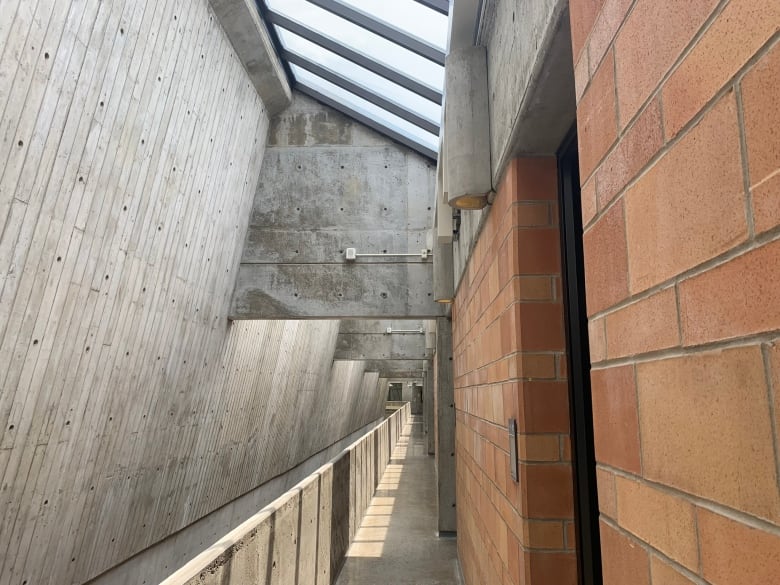
IDEAS producer Sean Foley toured Andrews' Science and Humanities Building with architect Joe Bogdan, and Bogdan's daughters: Lis, an architectural and design historian; and Stasia, a registered architect who works in healthcare.
All three experts described what Brutalist design offers in this building and why it should be treasured.

"The lower elements relate to the human, and the big concrete masses step back higher and away from you. Over time, ivy has grown over them. So you have this naturalization of these brutalistic or massive concrete walls," Joe explained.
Stasia says many architects in the field look for ways to include biophillia in design, the evidence-based effect of natural features on building occupancy.
"I think architects would work pretty hard these days to create a green wall that looks like this. So it's kind of an ironic aging of the building," Stasia added.
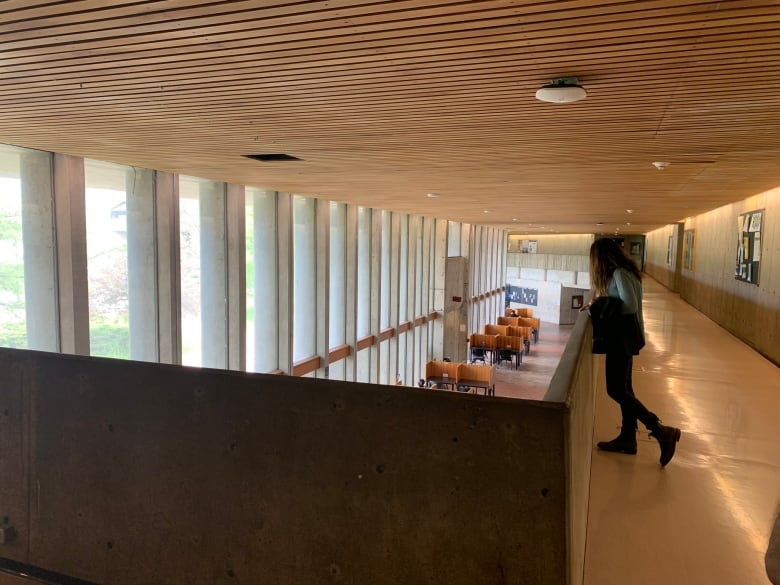
Stasia notes that only the inside of the building, facing the ravine, has windows. There are none in the front.
"So it's kind of fortress-like. But when you come in, it's this very intimate space where it feels very transparent, versus the outside, which is very solid," said Stasia.
To Lis, the building's oval staircase is reminiscent of the work by 16th-century architects Francesco Borromini and Christopher Wren.
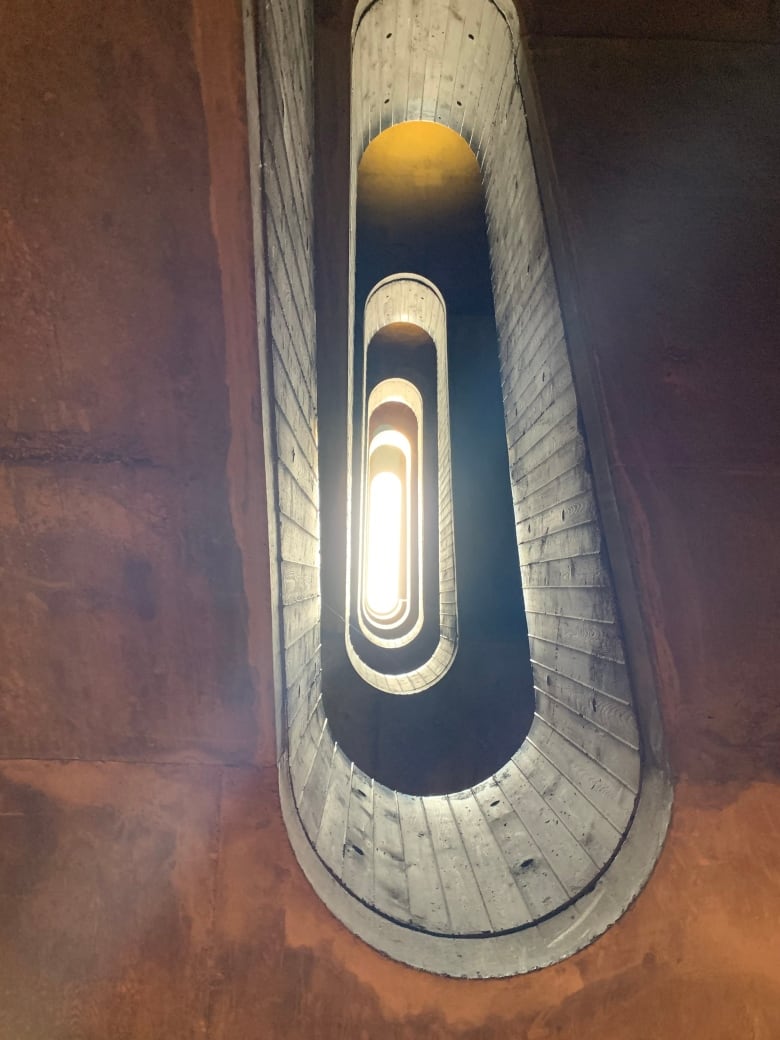
"This is 16th century Europe. With this cantilevered construction, which is so accepted into 20th-century architecture. But Borromini and Christopher Wren were the first to utilize that in late renaissance architecture. That sense of floating structure. How is it suspended? How is it supported?"
As Joe points out, buildings have a continuous life and there are opportunities to bring Andrews' masterpiece into the 22nd century.
"[Buildings] breathe and get old and either improve with age or some of them die. And here we have a building that should not die."
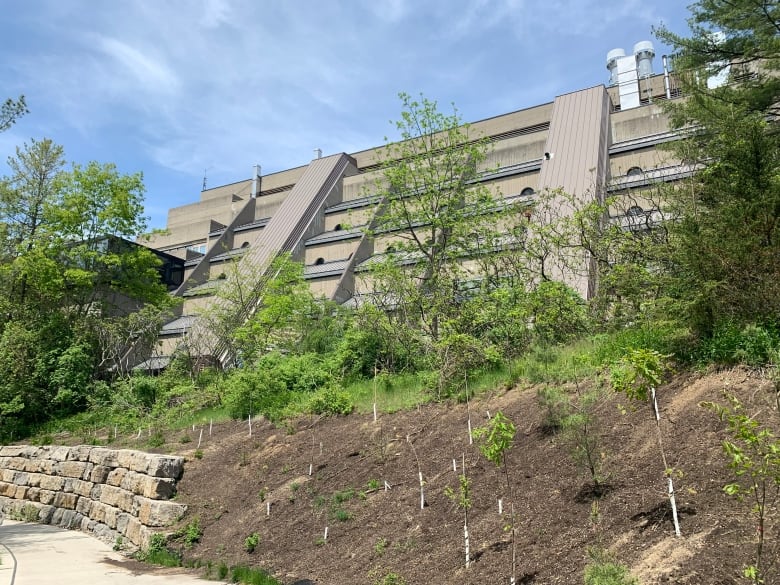
For now, Andrews' classic building is in good shape. But it, too, will need ongoing care if it is to remain standing, usable, and attractive.
Given the environmental effect of using concrete, buildings like Scarborough College aren't being built anymore. And demolishing them carries its own environmental price tag, not to mention the cost to a community that depends on buildings like the Ontario Science Centre and Robin Hood Gardens.
Those are perhaps good enough reasons to ensure that these classic structures are given new life as time goes by.
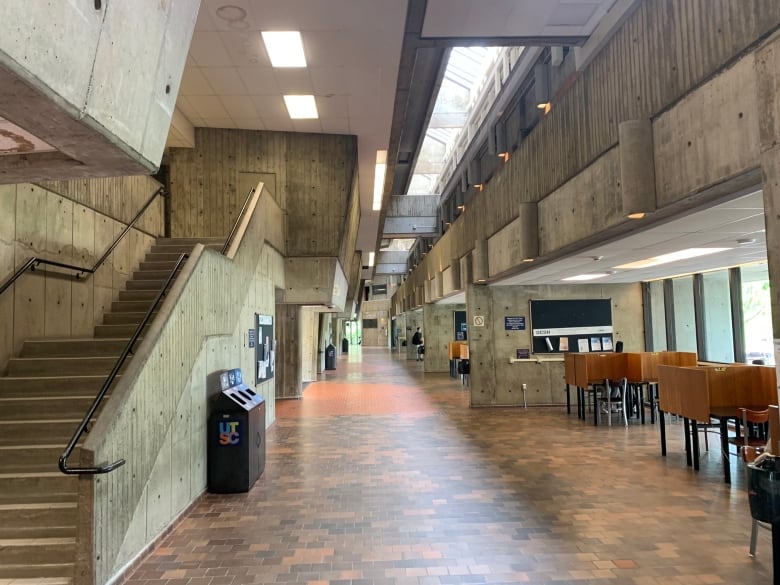
Listen to this documentaryby downloading the IDEAS podcast from your favourite app.
Guests in this episode:
Joseph Bogdan is principal emeritus at BNKC Architects, Urban Design Consultants.
Elisabeth Bogdan is subject lead at Sotheby's Institute of Art London.
Stasia Bogdan is a senior leader for healthcare capital planning and design at Unity Health Toronto.
Nick Thoburn is a professor in the department of sociology at the University of Manchester. He's also the author of Brutalism as Found: Housing, Form and Crisis at Robin Hood Gardens (Goldsmiths Press, 2022).
Zahireen Tarefdar is a Toronto-based creative and enthusiast of the Ontario Science Centre.
Produced by Sean Foley












_(720p).jpg)


 OFFICIAL HD MUSIC VIDEO.jpg)
.jpg)



























































































